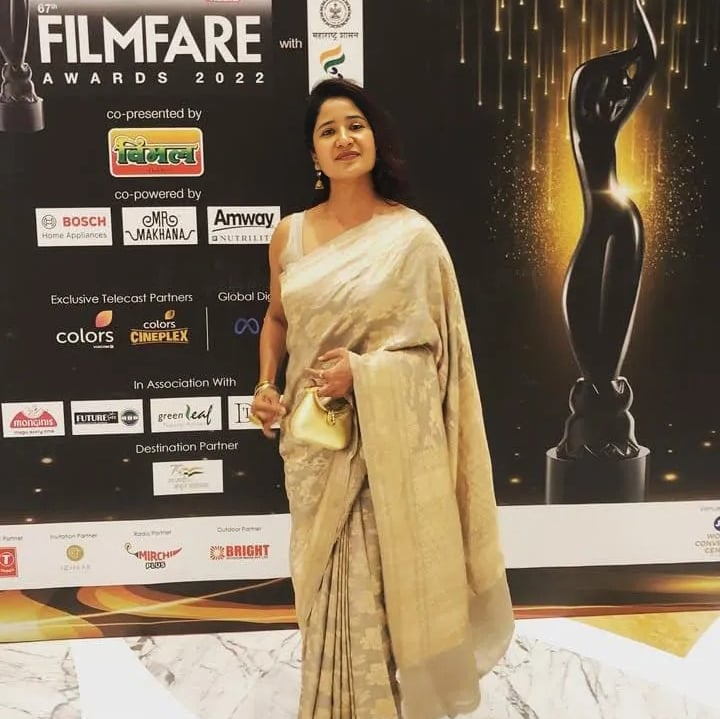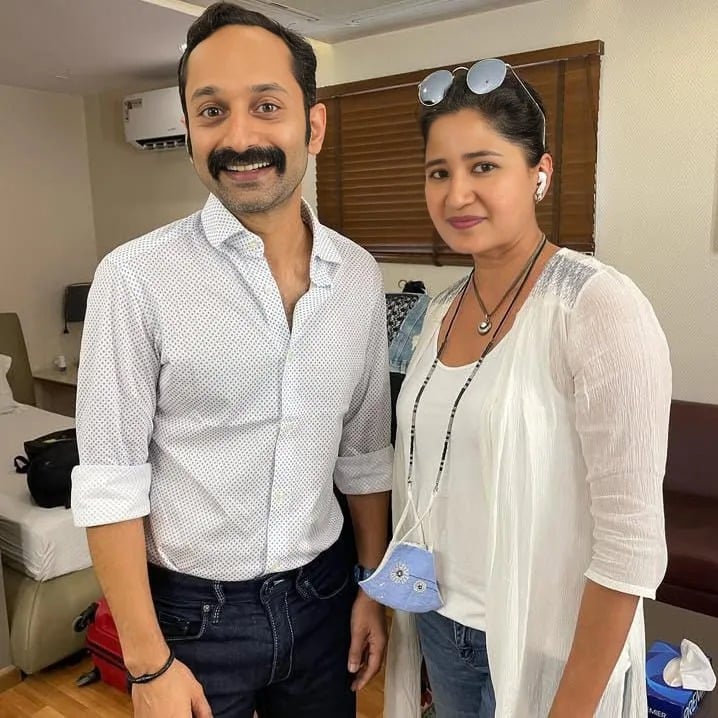Romita Devi VFX Artist




Romita Devi: Crafting Cinematic Realities Through Visual Effects in Indian Cinema
In the ever-evolving world of filmmaking, where stories leap off the screen into the hearts of audiences, visual effects (VFX) have become a vital tool in the storytelling arsenal. Among the emerging talents pushing the boundaries of digital creativity is Romita Devi, a gifted VFX artist whose contributions to Indian cinema—both in Bollywood and regional industries—have helped shape some of the most visually compelling films of recent years.
Romita’s impressive portfolio includes critically acclaimed projects like Leo (2023), Medal (2023), Fufad Ji (2021), Saunkan Saunkne (2022), Karnan (2021), and Dulla the Robinhood (2025). Her work reflects a perfect blend of technical prowess and artistic sensitivity, enabling directors to transform bold ideas into immersive realities. As audiences crave more ambitious visual narratives, Romita continues to be at the forefront of innovation in Indian VFX.
Early Inspirations and Education
Romita Devi’s journey into the world of visual effects didn’t begin with a green screen or high-end software—it began with a fascination for the visual magic in films during her childhood. Raised in a culturally vibrant environment, Romita was drawn to fantasy and action films, particularly those that seamlessly blended reality with fiction. Hollywood blockbusters like Jurassic Park and The Matrix left a deep impact on her imagination, sparking curiosity about the techniques behind the visuals.
She pursued formal education in multimedia and animation, specializing in VFX. Her rigorous training involved learning industry-standard software such as Autodesk Maya, Nuke, Houdini, and Adobe After Effects. Romita excelled in the technical as well as artistic elements of visual storytelling—lighting, composition, simulation, matte painting, and CGI integration.
Her academic background, combined with an innate creative spark, prepared her to work in demanding production environments and adapt to the visual language of different cinematic genres.
Breakthrough Projects and Career Milestones
Leo (2023)
Romita’s most recent work on Leo, a Tamil action-thriller starring Vijay and directed by Lokesh Kanagaraj, proved to be a landmark in her career. The film, known for its gritty visuals, high-octane action sequences, and stylized aesthetics, relied heavily on VFX to bring intensity and realism to its elaborate fight scenes, explosive moments, and background transformations.
Romita contributed to compositing, CGI environment creation, and particle effects for major sequences, ensuring visual consistency and realism. Her work not only enhanced the viewing experience but also played a crucial role in building the larger-than-life aura of the central character. Leo became one of the top-grossing South Indian films of the year, and its visual grandeur received special mention in reviews—thanks in part to artists like Romita.
Medal (2023)
In Medal, a Punjabi sports drama set against the backdrop of rural Punjab, Romita helped elevate the film’s emotional core through subtle yet impactful visual enhancements. From crowd duplication in stadium sequences to digital environment manipulation for rural landscapes, her work remained invisible yet indispensable.
Unlike fantasy or action-heavy films, Medal demanded restraint in its VFX usage. Romita’s contribution was key in enhancing realism, avoiding artificiality, and supporting the film’s grounded tone. Her ability to work with such nuanced narratives demonstrated her versatility as a VFX artist.
Fufad Ji (2021)
The comedy-drama Fufad Ji, starring Binnu Dhillon and Gurnam Bhullar, offered Romita a chance to explore digital makeup, wire removal, and comedic timing with VFX. Though largely a performance-driven film, there were several sequences that required light VFX work to maintain continuity and humor.
Romita ensured the visual transitions and retouching didn’t disrupt the natural comedic rhythm. It’s in these subtle touches—cleaning up backgrounds, correcting lighting digitally, and stabilizing frames—where a VFX artist’s quiet excellence shines through.
A Stronghold in Punjabi Cinema
While Romita has worked across regional industries, she has made a significant impact in Punjabi cinema, which in recent years has embraced VFX for enriching storytelling. Her work in films like Saunkan Saunkne and Dulla the Robinhood brought her recognition for seamlessly blending traditional narratives with modern visual enhancements.
Saunkan Saunkne (2022)
This romantic comedy, featuring a love triangle in a rustic Punjabi setting, became a box-office hit. Though not VFX-heavy in the conventional sense, Romita worked on several aspects—period look development, digital makeup corrections, and environment enhancements.
Given the film’s 1960s setting, visual effects were used to recreate the period authentically. Romita played a key role in creating digitally enhanced backdrops, adjusting colors for period consistency, and even digitally removing modern-day distractions from shots.
Dulla the Robinhood (2025)
This film, with its epic themes and historic setting, was a significant challenge. Romita worked on crowd simulation, digital weaponry, battle effects, and set extensions. As one of her most ambitious regional projects, Dulla the Robinhood provided her with the canvas to showcase her potential.
Her work helped create the illusion of large armies, expansive battlefields, and elaborate village scenes—elements that would have been expensive or logistically impossible to execute without VFX.
Karnan (2021): A Masterclass in Raw Visual Storytelling
Arguably one of the most visually arresting Indian films of the decade, Karnan, directed by Mari Selvaraj and starring Dhanush, stood out for its symbolic, raw, and poetic narrative style. Visual effects were used sparingly but effectively to amplify emotional beats and surreal imagery.
Romita was involved in the compositing and symbolic scene layering. From scenes involving the chained donkey to surreal portrayals of oppression and resistance, she worked with the director’s vision to merge symbolism with visual storytelling.
Karnan wasn’t about spectacle—it was about emotion. And that’s where Romita’s artistry shone. The film’s success on the national and international festival circuits earned her critical acclaim in post-production circles.
The Art and Science of VFX: Romita’s Creative Process
Romita Devi approaches each project with a clear understanding of the director’s vision, the tone of the film, and the visual language best suited for the narrative. Her process involves:
Storyboarding & Conceptualization: Before touching the software, she studies the script to determine where VFX can enhance the story without overshadowing it.
Realism Over Gimmicks: Romita emphasizes realism, ensuring that effects don’t distract from performances or cinematography.
Collaboration: She closely collaborates with cinematographers, editors, and directors to maintain continuity in visual tone.
Continuous Learning: VFX is a rapidly evolving field. Romita stays updated with the latest techniques, including AI-assisted editing, deep compositing, and virtual production workflows.
Women in VFX: Breaking Barriers
The VFX and animation industry has traditionally been male-dominated, especially in technical departments. Romita Devi stands as a role model for aspiring women in the field. Her rise in regional and mainstream cinema has helped break stereotypes and opened doors for more gender-inclusive workspaces.
She frequently mentors young female artists and speaks about the importance of gender equity in film production. Romita believes that storytelling thrives on diversity, not just on-screen but also behind the camera.
Future Projects and Aspirations
Romita is currently in talks for several upcoming projects in both Bollywood and South Indian cinema. She’s also collaborating on a fantasy web series for an OTT platform, where she will serve as lead VFX supervisor—a role that allows her creative control from pre-production to post.
Beyond film, Romita is interested in exploring virtual production, augmented reality (AR), and game cinematics. She envisions a future where immersive storytelling will transcend screens and enter interactive spaces, giving VFX artists even more avenues to create magic.
Conclusion: The Visual Alchemist of Indian Cinema
In an industry where visuals often define a film’s legacy, Romita Devi is quietly but powerfully shaping that legacy. Her work across genres—from socially conscious dramas to period epics and romantic comedies—reflects a deep understanding of cinema’s soul and its visual grammar.
As filmmakers continue to dream bigger, artists like Romita will be the ones giving those dreams form, color, movement, and depth. She is not just creating visual effects—she’s creating cinematic history.